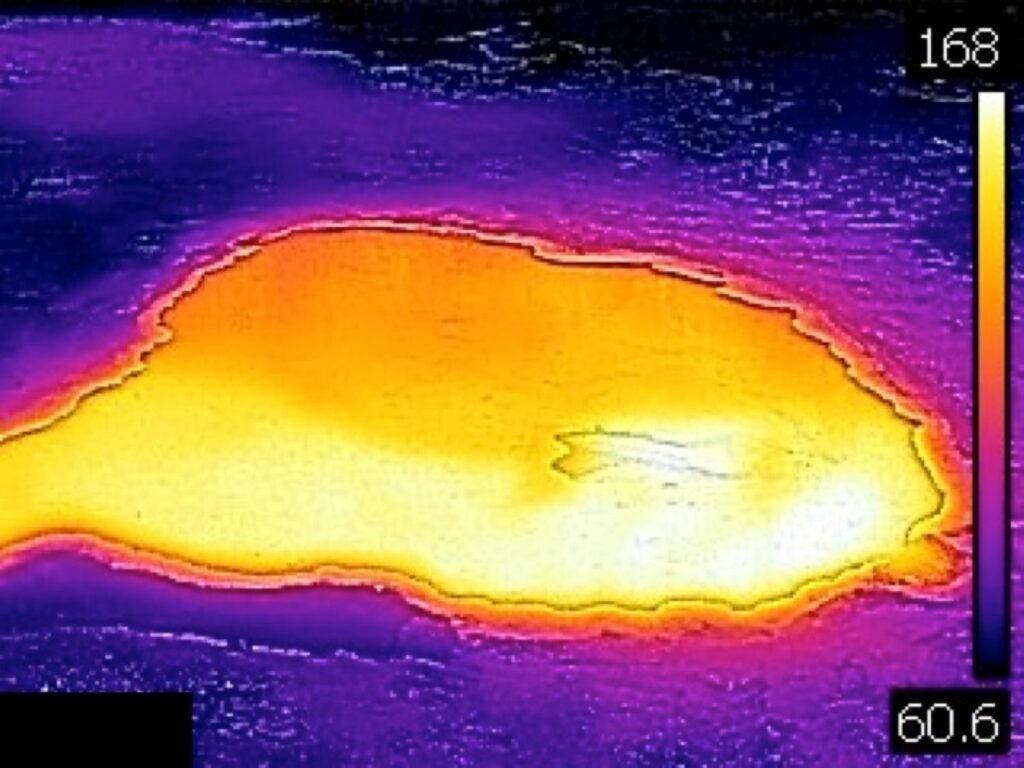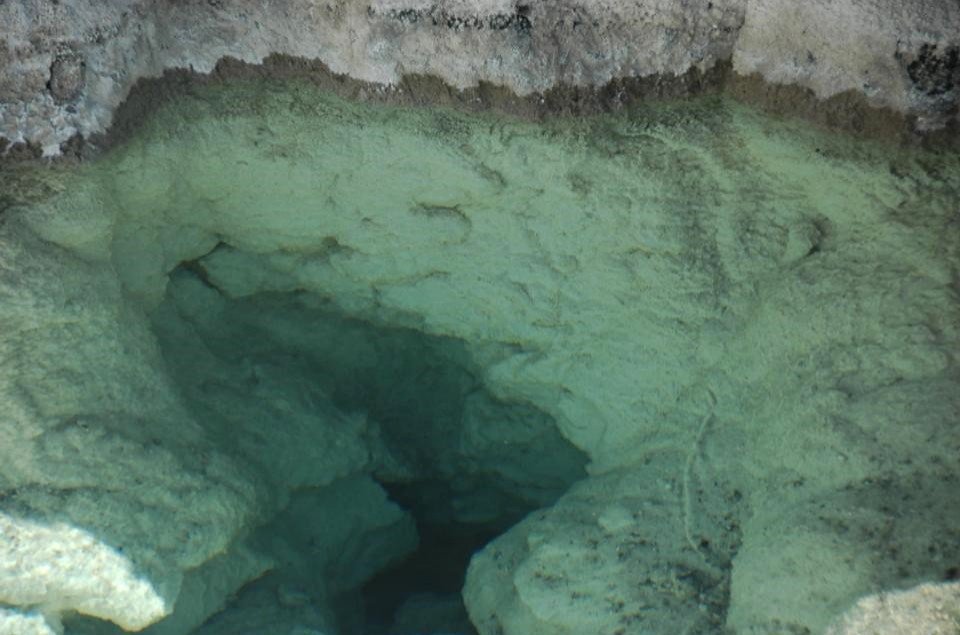The tranquil surface of Yellowstone Lake masks one of Earth’s most remarkable secrets. While millions of tourists admire the scenic beauty above, few realize that beneath this pristine alpine water lies an underground world more spectacular than most science fiction films dare imagine.
This massive freshwater lake conceals an intricate network of hydrothermal vents, towering spires, and unique ecosystems that have evolved in conditions found nowhere else on our planet. Scientists have only recently begun to understand the incredible complexity of what lies beneath these seemingly peaceful waters.
The Discovery That Changed Everything

The vents on the floor of Yellowstone Lake are three hundred to three hundred fifty feet deep, and so until recently we didn’t even know they existed. For decades, researchers focused on the park’s famous surface geysers and hot springs while an equally impressive thermal wonderland remained completely hidden from view.
The northern half of Yellowstone Lake lies inside the Yellowstone volcanic caldera, and hosts more than 250 hydrothermal vents and dozens of explosion craters that are hidden from view on the lake floor. The breakthrough came when scientists finally deployed underwater exploration equipment similar to what marine biologists use in deep ocean research. What they found fundamentally changed our understanding of Yellowstone’s geothermal activity.
Underwater Mountains Rising from the Deep

Long rows of pinnacles more than 100 feet high towered from the lake sediments like hundreds of church steeples lined up side by side. Of the hundreds of other submerged peaks and spires scattered across the lake bot tom, one measured nearly 100 feet wide at its base and stood just as high. These towering formations create an underwater landscape that rivals any mountain range on land.
The spires present a fascinating scientific puzzle. The researchers had expected to find the spires built of silica deposits like those that form around hot springs and geysers on land. Instead, they found about 90 percent of the struc ture made up of the platelike and tubular shells of diatoms. These microscopic algae have somehow constructed massive underwater towers through processes scientists are still working to understand.
The World’s Hottest Freshwater Vents

The hottest vents measured reached temperatures of approximately 250°F (121°C). Indeed, these are the hottest hydrothermal vents measured in a lake anywhere in the world! These extreme temperatures far exceed what most people imagine possible in a freshwater environment.
The intense heat comes from the magma storage region several kilometers below the caldera provides heat that circulates the hot fluids that feed the lake-bottom hydrothermal features. The weight from the overlying lake water acts like a pressure cooker lid and allows temperatures higher than boiling to be reached. This unique situation creates conditions found nowhere else on Earth’s surface.
Explosion Craters Hidden in the Depths

Next to the masses of spires, the team’s most spectacular finds includ ed some 20 to 25 depres sions in the lake bottom that they think are explo sion craters left by hotwater blasts from the lake bottom. These underwater blast zones represent some of the most powerful geological events in Yellowstone’s recent history.
The northern part of the lake hosts the largest known hydrothermal explosion craters in the world. These are generated when pressure in the hydrothermal circulation system suddenly drops, causing catastrophic steam explosions that can excavate craters more than a mile in diameter. The sheer scale of these features demonstrates the enormous energy contained within Yellowstone’s underground systems.
Unique Thermal Ecosystems Thrive in Darkness

They harbor distinct chemosynthetic bacterial communities, depending on temperature (16–110°C) and electron donor supply (H2S <1 to >100 μM; NH3 <0.5 to >10 μM). These communities exist in complete darkness, deriving energy from chemical reactions rather than sunlight.
The vents at Steamboat Point and Mary Bay at the northern edge of the lake, and deep-water vents off Stevenson island in the center of the lake, harbor chemosynthetic bacteria that assimilate dissolved inorganic carbon (DIC) in the dark at rates typically 0.08–0.5 μM C h−1, with maxima at approximately 0.75 μM C h−1. Thus, chemosynthetic rates often exceed the photosynthetic rate at the lake surface, approximately 0.25 μM C h−1. These microbes actually produce organic matter faster than the photosynthetic organisms living in the sunlit waters above.
Living Streamers and Microbial Mats

Microorganisms associated with sulfur-rich filamentous “streamer” communities of Inflated Plain and West Thumb (pH range 5–6) were dominated by bacteria from the Aquificales, but also contained thermophilic archaea from the Crenarchaeota and Euryarchaeota. Novel groups of methanogens and members of the Korarchaeota were observed in vents from West Thumb and Elliot’s Crater (pH 5–6). These colorful, flowing formations create underwater gardens that pulse with life.
The streamers are essentially living carpets composed of heat-loving bacteria and archaea that have adapted to extreme conditions. Scientists have discovered that these communities contain organisms never before seen in terrestrial hot springs, suggesting that the underwater environment provides unique evolutionary pressures that have led to completely novel life forms.
The Lake Floor Laboratory

Though difficult to access, this hydrothermal system provides an ideal natural laboratory to study cause-and-effect relationships between tectonic, magmatic, climatic, and hydrothermal processes because it is unusually sensitive to perturbations. Researchers have deployed sophisticated monitoring equipment on the lake floor to track how the system responds to earthquakes, seasonal changes, and volcanic activity.
Over the past few years, the research team deployed a network of pressure–temperature gauges, heat flow equipment, and seismometers on the lake floor. The most intensive work began in recent years, when they deployed a network of monitoring instrumentation, including lake-bottom seismometers and chemical sensors. This underwater observatory provides unprecedented insights into how Earth’s geological processes interact with hydrothermal systems.
Ancient Secrets Locked in Lake Sediments

There’s approximately 10,000-15,000 years of history locked up in the sediment of Lake Yellowstone. Sediment could tell Morgan what was happening locally, or even provide perspective on volcanic activity in the Cascade Range, by looking at ash deposits. The lake bottom serves as a natural archive of geological and climate events spanning hundreds of thousands of years.
Some cores were nearly 40 feet long, digging into deeper sediments that extend further back in time – up to 15,000 years ago, when glaciers were beginning to recede from Yellowstone. These sediment records help scientists understand how the hydrothermal system has responded to major climate changes and volcanic events throughout history.
Conclusion

The hidden caverns beneath Yellowstone Lake represent one of the most extraordinary and least understood environments on Earth. From towering spires built by microscopic algae to the hottest freshwater vents ever discovered, this underwater realm challenges our understanding of where life can thrive and how geological processes shape our planet.
Scientists continue to make surprising discoveries each time they venture into these depths. The unique combination of extreme heat, darkness, and chemical richness has created ecosystems that may hold keys to understanding how life first evolved on Earth and where we might find it on other worlds.
What secrets still lie hidden in the depths of Yellowstone Lake? Tell us what you think about these remarkable underwater discoveries in the comments.

Hi, I’m Andrew, and I come from India. Experienced content specialist with a passion for writing. My forte includes health and wellness, Travel, Animals, and Nature. A nature nomad, I am obsessed with mountains and love high-altitude trekking. I have been on several Himalayan treks in India including the Everest Base Camp in Nepal, a profound experience.




